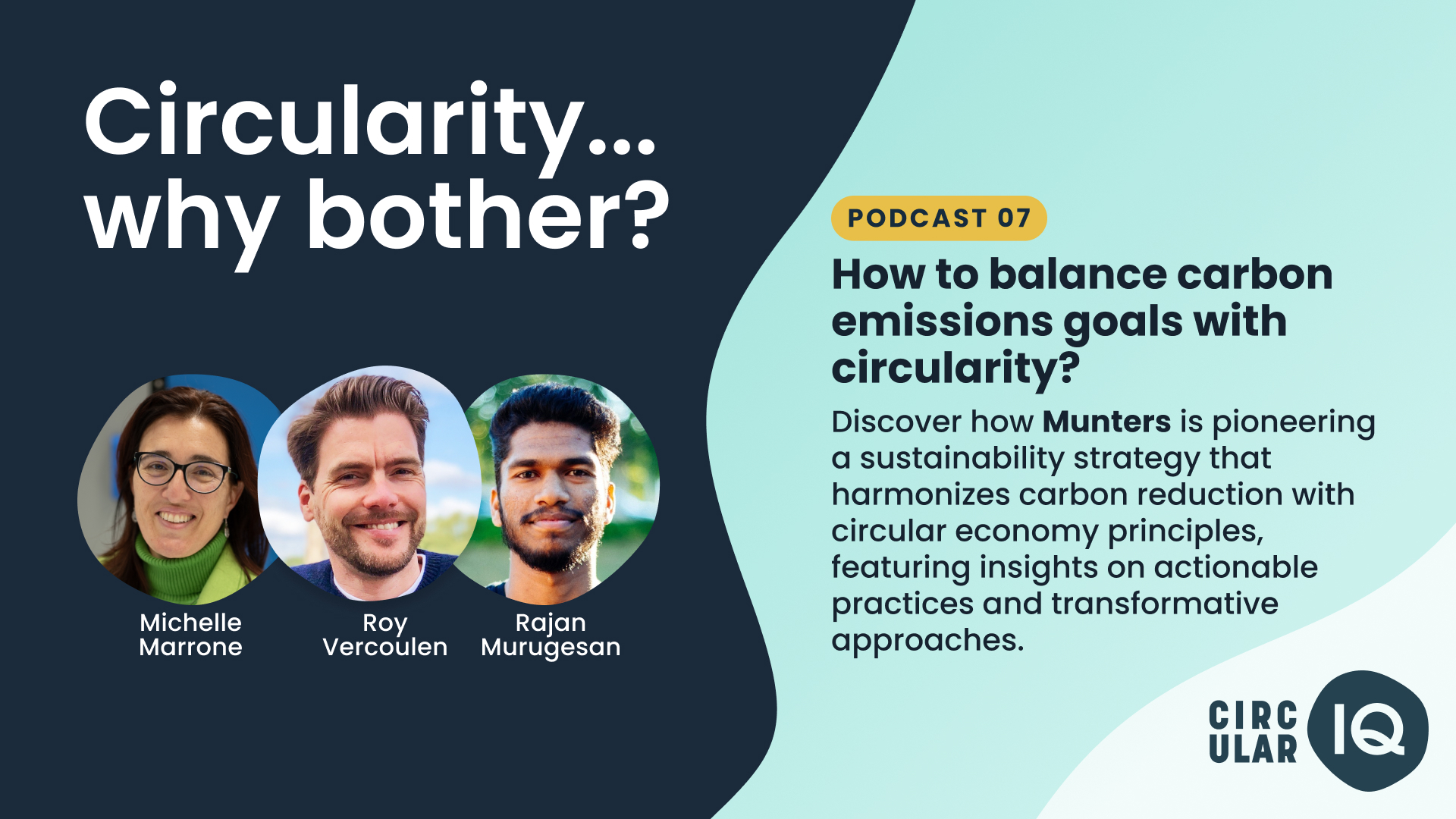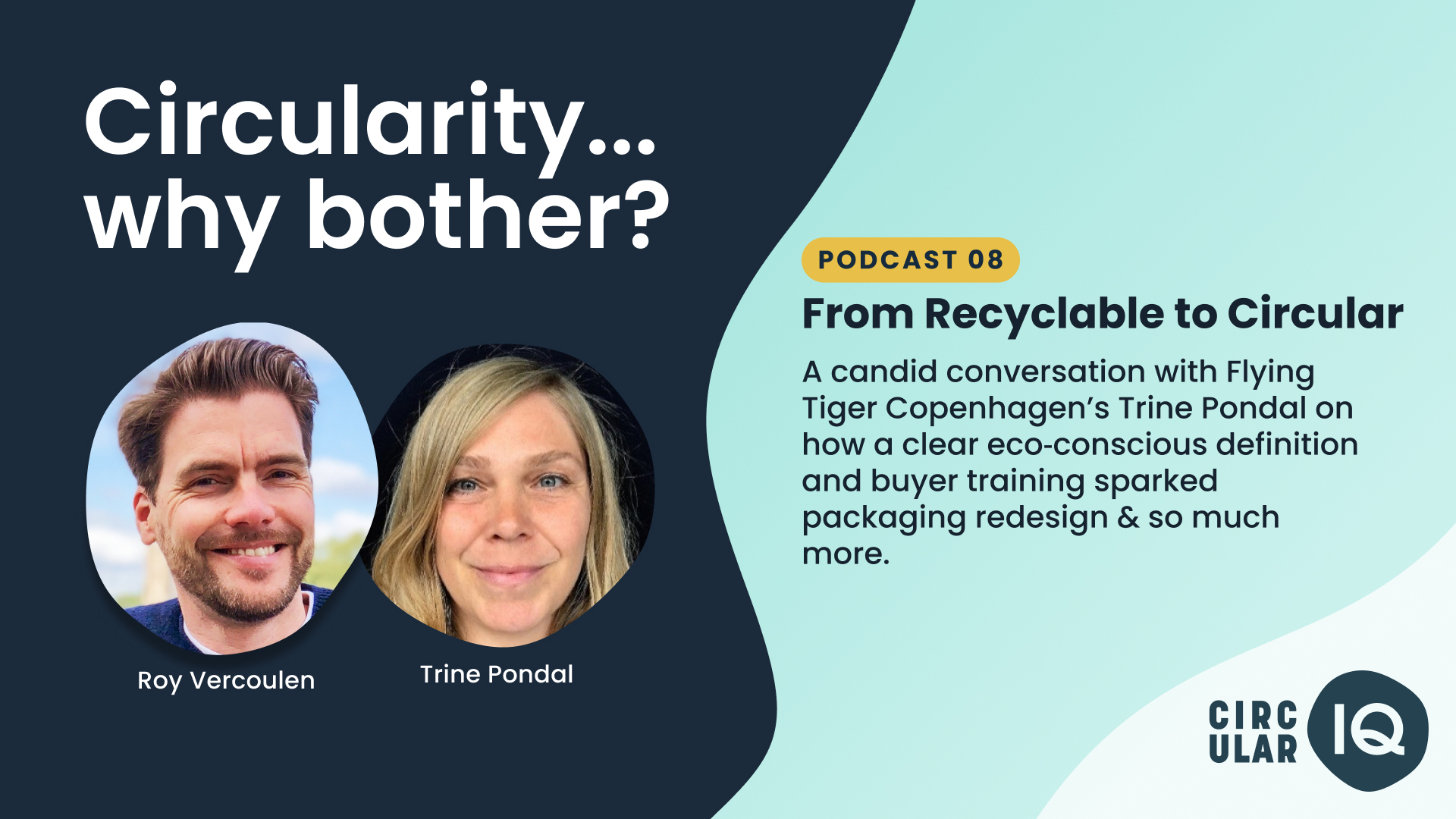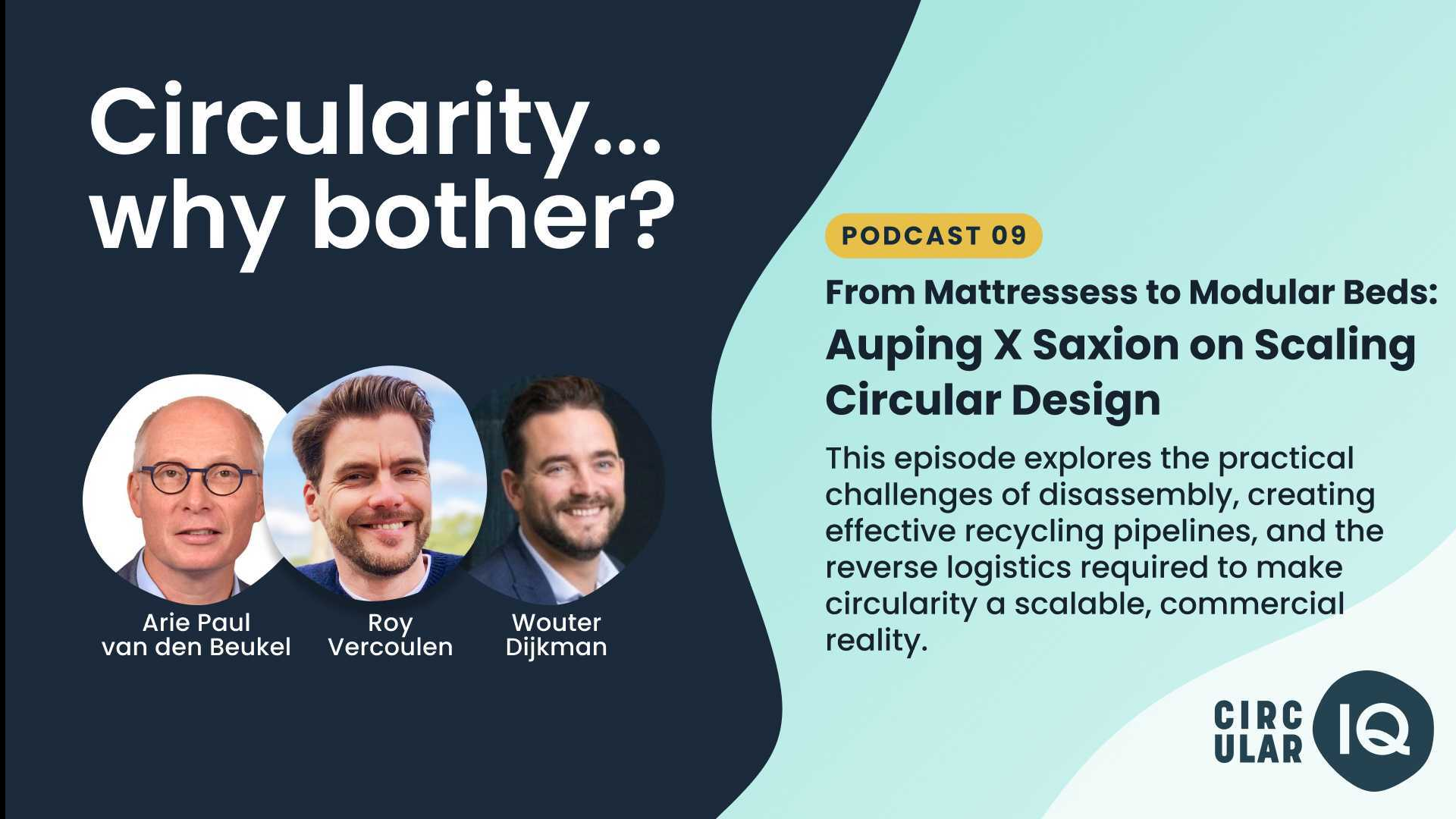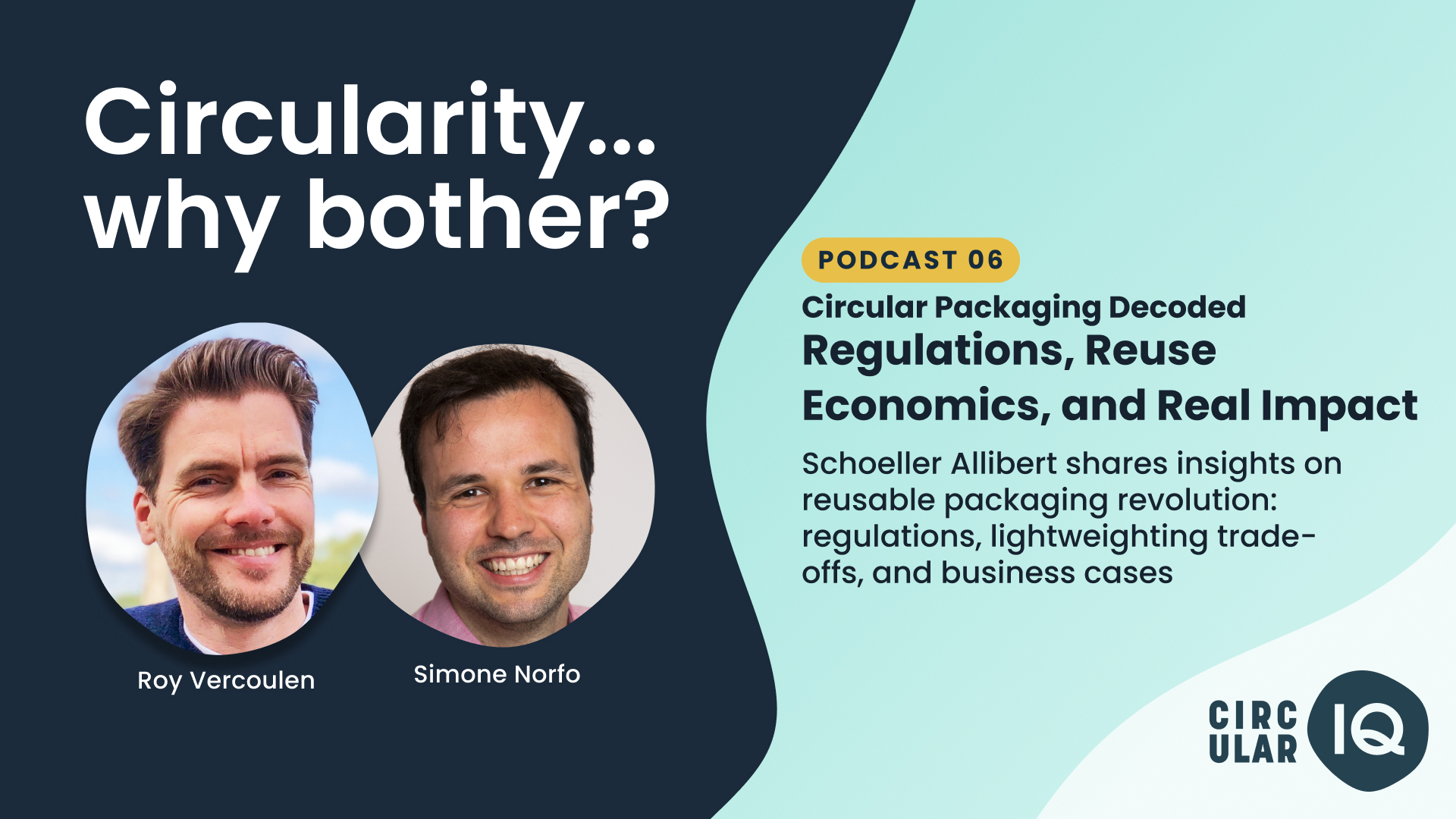In today’s fast-evolving sustainability landscape, businesses are under increasing pressure to implement circular economy strategies. Yet, many sustainability managers struggle to gain traction within their organizations. Sustainability efforts often get stuck in CSRD compliance, seen as necessary but not as value-creating.
In a recent conversation, Roy Vercoulen, founder of Circular IQ, and Jacco Jochemsen, a circular economy expert from Circle Economy Consulting, explored how sustainability managers can break this cycle. Their insights highlight the power of quick wins and strategic storytelling in embedding circularity into business operations.
Why Should Businesses Care About Circularity?
Many organizations understand the importance of sustainability but remain unsure about where to start. Circularity metrics are not just about regulatory reporting; they serve as a business philosophy that impacts supply chains, customer relationships, and financial performance.
“If you're a customer-facing business, ask yourself: How can we engage differently with our customers? Instead of just selling products, how do we ensure they get the best value for as long as possible?” – Jacco Jochemsen
Rather than treating circularity as a sustainability checkbox, businesses should view it as a data-driven sustainability approach that offers competitive advantages. Whether through better customer retention, supply chain resilience, or cost savings, circularity provides tangible business benefits.
Overcoming the Paralysis of Complexity
One major hurdle businesses face is the overwhelming complexity of circular economy principles. Unlike CO₂ reduction, which has clear metrics, circularity spans product design, material flows, waste management, and supply chain transparency. This complexity can lead to paralysis, where companies don’t know where to begin.
Jacco emphasizes that organizations should start by identifying their primary driver—whether it’s CSRD compliance, customer engagement, supply chain resilience, or market differentiation. Once the objective is clear, circularity becomes a means to an end, not an abstract concept.
Quick Wins: The Key to Internal Buy-in
One of the most effective ways to gain organizational support for circularity is through quick wins—small, tangible successes that demonstrate immediate value.
“If you find a customer interested in a circularity pilot, suddenly everyone in your company wants to jump on board. A quick win energizes the organization and creates momentum.” – Jacco Jochemsen
Instead of starting with complex, long-term initiatives, sustainability managers should focus on small projects that showcase measurable benefits, such as: ✔ Reducing waste and improving repairability
✔ Launching take-back programs for extended product life
✔ Improving supply chain transparency to enhance material circularity
By achieving quick wins, sustainability teams can prove that circularity metrics drive revenue, reduce costs, and improve customer loyalty.
The Role of Strategic Storytelling
Even with strong business cases, sustainability managers often struggle to communicate the value of circularity to decision-makers. The key is strategic storytelling—crafting a narrative that aligns circularity with business goals.
“We work with sustainability managers who already know their business inside out. The challenge isn’t knowledge—it’s storytelling. You need to frame circularity in a way that resonates with leadership.” – Jacco Jochemsen
Rather than presenting circularity as an ethical obligation, sustainability managers should align it with:
✔ Revenue Growth: How circular business models open new market opportunities.
✔ Operational Efficiency: How circular strategies reduce costs and improve supply chain stability.
✔ Customer Value: How extending product life cycles increases customer satisfaction and retention.
By aligning circularity with what matters most to executives, sustainability managers can turn passive listeners into active champions.
Embedding Circularity in Corporate Strategy
Many businesses treat sustainability as a separate function, rather than integrating it into their core strategy. Jacco shares an example of a large manufacturing company that initially saw circularity as a reporting requirement. However, when they aligned it with their corporate growth strategy—focusing on service excellence, customer engagement, and logistics optimization—it became a catalyst for innovation rather than just a compliance effort.
“Embedding circularity into corporate strategy transforms it from a ‘nice-to-have’ sustainability initiative into a business growth accelerator.” – Jacco Jochemsen
This shift is crucial. If circularity remains siloed within the sustainability department, it will never reach its full potential. By linking it to corporate objectives, businesses ensure that sustainability drives long-term value.
Data-Driven Decision Making
One of the biggest challenges in implementing circularity is gathering reliable data. However, businesses often already have useful data—they just don’t realize it.
“There’s always a moment in a project where someone says, ‘Wait, weren’t we already doing this?’ They suddenly see that they’ve been collecting data without leveraging it strategically.” – Jacco Jochemsen
Companies should start by identifying 5-10 key performance indicators (circularity metrics) that align with their business goals, such as:
- Percentage of materials sourced from recycled content
- Product lifespan extension metrics
- Customer participation in take-back or repair programs
By measuring and reporting on these KPIs, businesses can track progress and refine their strategies over time.
A Real-World Example: Swapfiets
A compelling example of circularity in action is Swapfiets, a company that provides bike subscriptions rather than selling bikes outright. Their model ensures:
- Durable, repairable products that last longer
- A continuous revenue stream instead of one-time sales
- Data collection on product durability and customer usage
“Swapfiets now tells its suppliers, ‘Make this screw shorter because it’s causing unnecessary repairs.’ No bike manufacturer ever had access to that kind of insight before.” – Jacco Jochemsen
This data-driven sustainability approach allows Swapfiets to improve product design, enhance customer experience, and create a more resilient supply chain.
Final Thoughts: The Path to Circularity
The journey to circularity doesn’t happen overnight. However, companies that start with quick wins, align circularity metrics with business objectives, and leverage strategic storytelling will accelerate their transition.
Key takeaways:
✔ Start with small, measurable successes to build momentum.
✔ Frame circularity as a business opportunity, not just a CSRD compliance requirement.
✔ Use data-driven sustainability to drive decision-making and demonstrate impact.
✔ Align circularity with corporate strategy to ensure long-term integration.
Sustainability managers don’t need to knock on doors that never open. By embedding circularity into business logic and leveraging compelling narratives, they can turn skeptics into allies and drive meaningful change.
Are you ready to integrate circularity into your business?
Begin by identifying your key opportunities, securing quick wins, and crafting a strategic narrative that resonates with leadership. The transition to circularity is not just about sustainability—it’s about building a more resilient, innovative, and competitive business for the future.





